How to choose a dual-circuit floor gas boiler: what to look at before buying?
From the point of view of the cost of energy resources and ease of maintenance, the optimal solution of all the options for devices for heating a house can be called gas equipment.
If it is necessary not only to heat the room, but also to provide the house with hot water, then a double-circuit floor gas boiler capable of serving both compact houses and spacious apartments will be the best choice.
The buyer is facing a difficult task. Agree, it’s quite difficult to navigate the variety of proposals of manufacturers of heating units.
We will help you understand the device and the specifics of the operation of different models, outline the main parameters of a competent purchase, and also give practical recommendations for choosing a gas boiler.
The content of the article:
- Convection or condensation boiler?
- Type of power supply: non-volatile or not
- Heating principle: flowing or storage
- Heat exchanger materials: which is better
- Selection of equipment by type of smoke exhaust
- Double-circuit boiler ignition methods
- Use of coolants in boilers
- How to choose the power of a double-circuit boiler
- What else you need to pay attention to
- Conclusions and useful video on the topic
Convection or condensation boiler?
What you need to know about the characteristics of such equipment, its design and operational features, let's try to figure it out.
Convection gas floor-standing boilers use heat to heat the coolant, obtained from the energy that is released during the combustion of gas. At the same time, a large amount of heat, together with steam and flue gases, goes into the atmosphere.
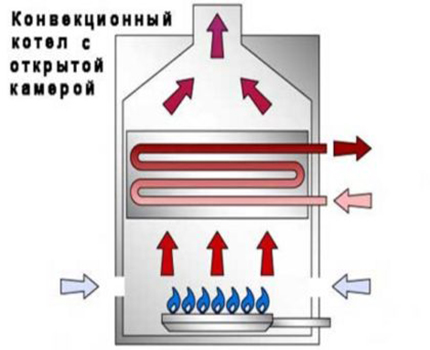
Although convection boilers are not considered the most efficient, from the point of view of economy, their existence in the heating equipment market justifies a number of advantages.These include simple construction, reasonable cost, compact dimensions, easy installation and repair.
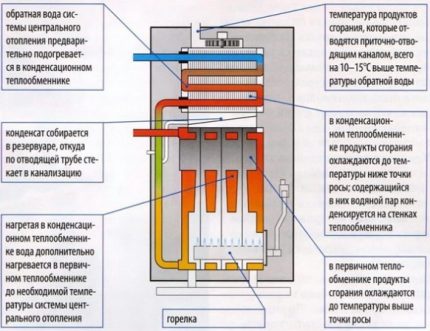
One of the disadvantages of condensing boilers is the relatively high cost. The last factor, however, quickly pays off, since there is a noticeable decrease in gas consumption. The second is the difficulty of disposing of condensate, which cannot be easily drained into a septic tank so as not to destroy the bacteria processing waste water.
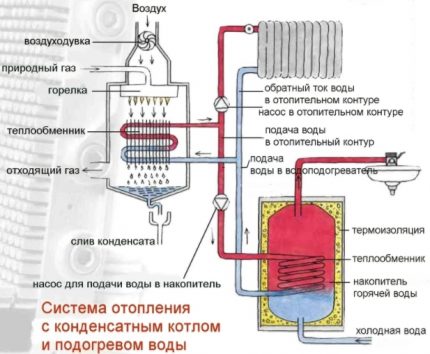
Type of power supply: non-volatile or not
The principle of operation of a volatile boiler is as follows: the installed automation detects with the help of sensors the activation of the domestic hot water system or a decrease in the temperature in the heating circuit and turns on the heating.
The heat transfer agent, passing through the heat exchanger, is heated to the required temperature and is supplied to the heating system or hot water circuit using circulation pump.
It is understood that a volatile device will consume electricity. To reduce its consumption, it is better to choose models with energy class A ++. But, in addition to energy consumption, it is necessary to take into account the cost of repair, replacement of spare parts, automation.
For example, breakdown of electronic circuit boards is a fairly common occurrence, repairs are expensive, and replacing a part with a new one will cost almost half the cost of the boiler itself.
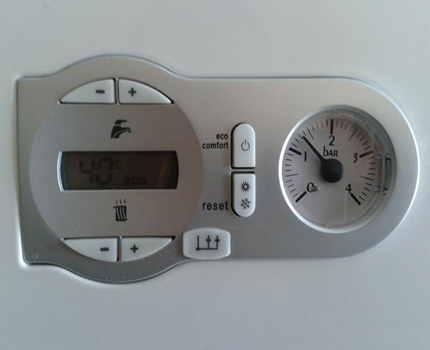
But non-volatile models can be called the most adapted to the conditions when the electricity is turned off, and energy fluctuations make you worry about the integrity of the automation.
Heating principle: flowing or storage
The flow principle of heating can be carried out by two types of heat exchangers:
- separate;
- bithermic.
Both of them have both advantages and disadvantages, so the choice may depend only on the buyer of the equipment and his preferences.
Separate heat exchanger boiler has a primary (designed for heating) and secondary (used for heating water) heat exchanger. The secondary heat exchanger has a built-in circuit that serves to heat the water that is heated, taking heat from the heating medium coolant.
This type of boiler cannot simultaneously work in the heating and water heating mode: as soon as one system is turned on, the work of the second is suspended.
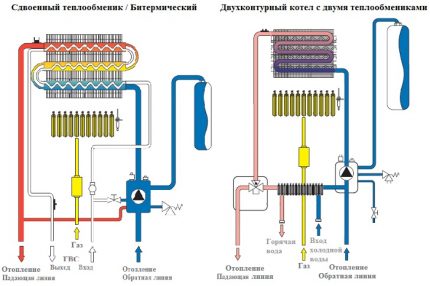
In bithermic heat exchangers water is heated by a burner located in the tube, which passes inside the main heat exchanger. In such equipment, the water heats up much faster. Such boilers are more compact and cheaper.
A significant disadvantage of bithermic boilers is the temperature difference in the hot water supply. This leads to the fact that immediately after opening the tap can go very hot water.
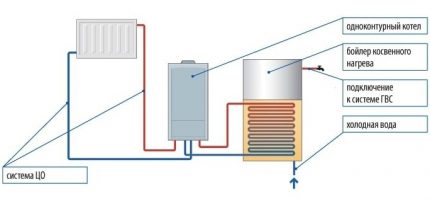
Double-circuit floor gas boilers with a built-in tank, unlike flow models, can provide full water. The volume of tanks varies from 25 to 60 liters. For heating large volumes use devices with high power. You can further increase productivity with the help of boilers combined in cascades.
Heat exchanger materials: which is better
The heat exchanger plays one of the main roles in the design of a gas heating device - a coolant circulates through it. The most common materials used in the manufacture of heat exchangers for gas boilers are copper, cast iron, steel.
Steel heat exchanger option
The cheapest and, as a result, the demanded material for the heat exchanger is steel. Therefore, it is actively used by domestic manufacturers in order to reduce the cost of the final product. Unlike cast iron, brittleness is not characteristic of it.
Compared to cast iron, steel is much lighter, but when compared with copper, it significantly exceeds its weight and makes the boiler design heavier.
The steel heat exchanger heats up quickly and cools down. In addition to convenience, this leads to negative consequences - the "fatigue" of the metal causes damage. The downside of steel is also its susceptibility to corrosion.
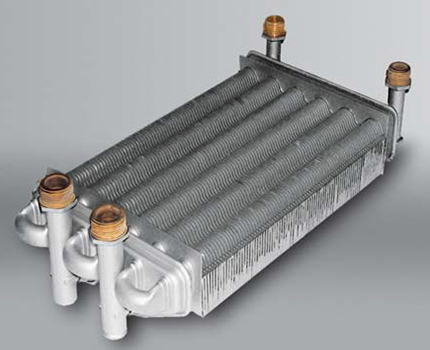
Copper type heat exchanger
The material has many positive properties - corrosion resistance, small volume, low inertia. Due to its compactness and low weight, copper is actively used for the production of light wall-mounted boilers.
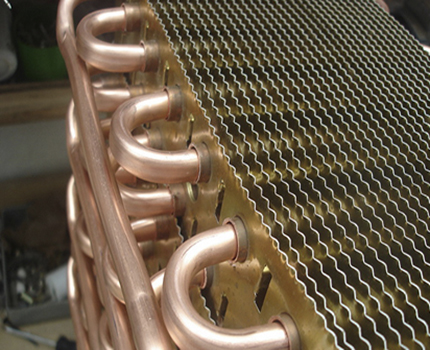
Manufacturers of modern heating equipment have long been refuted by the manufacturers of modern heating equipment - the burner power is reduced by 30%, which reduces the thermal effect on the metal and has a good effect on the duration of the work.
Cast iron heat exchanger boilers
The main quality of cast iron, which should be noted, is inertia. The material heats up for a long time and cools down for a long time, which increases the efficiency of heat transfer.
This inertia can be considered both a positive quality and a negative one - in the event of a sharp warming in the street, the boiler will maintain a high temperature in the heating system for a long time.

Cast iron undergoes dry and wet corrosion. The latter contributes to the appearance of rust, but due to thick walls, the corrosion process stretches for a long time.
The disadvantages of cast iron boilers include the fragility of the material, which manifests itself as a result of improper operation - temperature drops, mechanical damage during transportation and installation.
Selection of equipment by type of smoke exhaust
The method of flue gas extraction is one of the most important factors when choosing gas equipment. It directly affects the choice of model, and the ability to install it in a particular room. Therefore, it is important to study possible smoke removal options and choose the best one.
Chimney type boilers
The combustion process in chimney-type boilers is ensured by natural draft, which uses the air from the room. The required amount of air enters through the open combustion chamber.
Cons of chimney floor boilers of double circuit type:
- Efficiency is several percent lowerthan with turbocharged gas equipment - part of the heat escapes into the pipe along with smoke.
- Additional costs for chimney construction. If everything is done correctly, in accordance with legislative standards, then you need to obtain an additional permit, install a sensor that measures the level of carbon dioxide, annually invite a specialist to conduct an examination.
- Active condensation - Modern equipment has a higher efficiency and gives a small exhaust temperature at the outlet. As a result, especially if the chimney is not very insulated, condensation forms, which leads to the rapid destruction of the chimney walls.
- The need for adequate ventilation. As a result of combustion, warm air from the room is drawn into the chimney. In the presence of a chimney boiler, it is imperative to provide forced ventilation.
Due to the features of the mechanism of action and operation, a separate boiler room.
Equipment advantages:
- relatively low cost of the device;
- simpler design that is easier and cheaper to maintain;
- the ability to withdraw combustion products to a greater distance from the house.
Due to its cost, durability and simple operation, floor chimney boilers are quite popular.
In cases where the house already has a ready-made chimney, which is correctly installed and working, experts advise not to spend money on more expensive models and install ordinary stationary equipment with a connection to the chimney, with an open combustion chamber.

Parapet boiler: design features
Parapet boilers can be divided into a separate category of equipment for their placement, but they also have a feature related to the output of combustion products. They differ from stationary gas boilers by the need to connect a coaxial pipe to remove smoke.

Parapet boilers can be installed in rooms of any purpose, even in an apartment of a multi-storey building (if there is permission), and anywhere - on the windowsill or under it, instead of the battery. The only limitation in this case is the length of the horizontal section of the pipe should not exceed 3 m.

Turbocharged heating boilers
Sometimes, due to the lack of a chimney or architectural features of a building, chimney equipment cannot be installed. Then, a turbocharged boiler is used as a heating device.
This is a device in which the fuel combustion process is carried out in a closed chamber, and the flue gas is forcedly emitted by means of a built-in turbine, the rotation speed of which can be regulated - set to the optimal pressure.
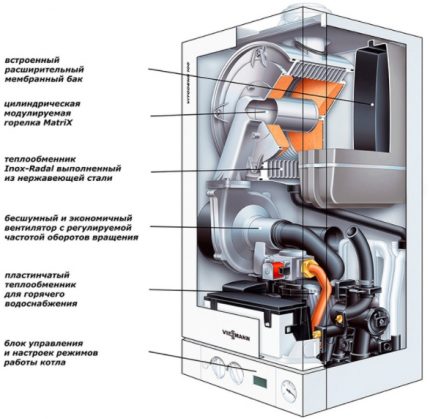
Disadvantages of turbocharged double-circuit boilers of floor type:
- another point of expenditure in the event of a turbine breakdown;
- insignificant but additional noise that the fan makes;
- increase in energy consumption.
Compared to chimney boilers, turbine ones consume about 50 watts more.
The advantages of the equipment are as follows:
- Universality of application - the boiler can be installed in almost any room (private house, apartment).
- No access to open source of fire, reduces the likelihood of carbon monoxide entering the house.
- No need to install a chimney. A turbine boiler has a high cost, but due to the fact that it does not require the installation of a chimney, its installation is much cheaper. Savings on the purchase of pipes and the cost of installation services far outweigh the costs of more expensive equipment.
- The boiler does not draw air from the room, which means that heat loss is reduced. He takes air to maintain combustion from the street. Therefore, it does not require equipment in the supply ventilation room (although, in some cases, when replacing chimney boilers with turbine ones, the lack of additional ventilation leads to poor air exchange and increased humidity in the house).
There are differences between different types of boilers, but in general they are all designed for safe operation and a fairly high efficiency. The choice of model depends more on financial capabilities and specific operating conditions.
Double-circuit boiler ignition methods
Without an automatic ignition system, few imagine the comfortable use of gas heating equipment. There are two completely different principles that can be applied for both electric-dependent and fully autonomous boilers - electric and piezo ignition.
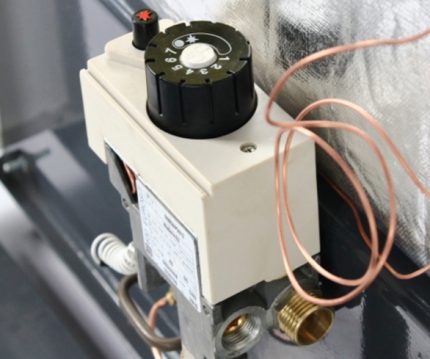
The piezo ignition method operates on the same principle as ignition in a lighter - pressing a button leads to the appearance of a spark that starts the combustion process. In the future, control that the flame does not go out, is carried out using a thermocouple.
The element is heated by the burner, generating a current that keeps the solenoid valve from slamming. During a temporary suspension in the boiler, the wick still remains lit.
Piezo ignition is often used in non-volatile boilers and is, in fact, a semi-automatic system. If the gas is turned off, the burner goes out and the valve closes, stopping further gas supply. You can start the boiler again by pressing the button.
Electric ignition provides complete automation - the heating device starts up with the appearance of a spark, and flame control is carried out using the ionization control unit. When the power is turned off, the automatics work, it shuts off the gas, and when turned on, it starts the boiler.
In such devices there is no need for a constantly burning ignition filter, and this is a significant gas saving. It is possible to eliminate the dependence of the electric ignition boiler on the power supply using batteries.
Use of coolants in boilers
If irregular living or frequent and long departures is planned in the country house or in a private house, and draining and purging the liquid from the system is not considered as an acceptable option, then it is necessary to prevent freezing.
This can be done by adding antifreeze to the coolant - substances that do not freeze to a certain negative temperature, and in the case of even lower temperatures do not harden, but turn into a gel-like substance, without increasing in volume.
It is not recommended to use antifreeze in double-circuit floor boilers operating on gas, in most cases (for single-circuit boilers, these standards are less stringent). The instructions clearly indicate that coolant in the heating system there must be water.
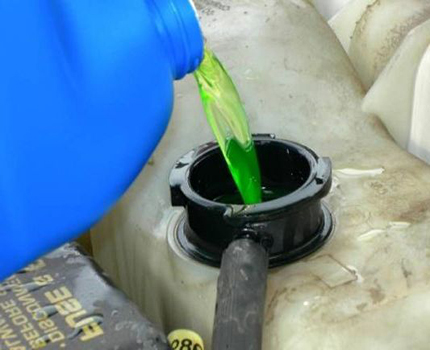
Some manufacturers indicate a specific brand of antifreeze that can be used for pouring into the heating system. For example, a manufacturer of equipment Viessmann recommends using brand coolant Antifrogen.
Others indicate that, as an exception, antifreeze can be used if its manufacturer guarantees that the product does not harm the components and materials of the boiler, in particular the heat exchanger. It should be borne in mind that for a particular model, one coolant may come up and not fit another.
Therefore, if it is important that antifreeze is used as the coolant in the heating system, it is necessary to find out before purchase whether it is possible, and if so, what brand of coolant is allowed to be used for a particular make and model of the boiler.
How to choose the power of a double-circuit boiler
One of the most important indicators to consider when buying gas heating equipment is power.
It should be borne in mind that a too powerful boiler will lead to an excessive consumption of gas fuel, and insufficient power of the device will not be able to provide a comfortable temperature regime, or the equipment will work to the limit of its capabilities and will quickly fail.
Power calculation formula
It is hardly possible for an ordinary user to achieve accuracy in calculations, but you can try to get approximate figures. As a basis, it is necessary to take the specific power of the heating device, calculated for a specific region, multiply by the area of the heated room and divide by 10.

The result obtained is the required boiler power under ideal conditions.
Depending on the characteristics of the premises, it is necessary to amend:
- for rooms with a height of more than 2.8 m, for every 10 cm of the above number, it is necessary to increase the initial value by 3%;
- two walls facing the street mean that it is necessary to increase the capacity by 15%;
- an unheated room on top requires an increase of 12%, from the bottom - by 7%;
- if from the entire area of the room the glazing occupies more than 8%, then for each excess of 1% add 1% of power;
- an external door that systematically opens increases heat loss by 15%.
When buying a dual-circuit floor gas boiler, whether floor or hanging model, you need to add another 20%. After all calculations, it is also recommended to add a small margin of power - so the load on the device will be less and it will last longer.
Auto Simulation Function
It is better that the boiler is not only selected according to the power level, but also has the function of its adjustment. There are devices with single-stage, two-stage and simulated power. The models of the latter two types are more efficient in operation, since they have the ability to adjust.
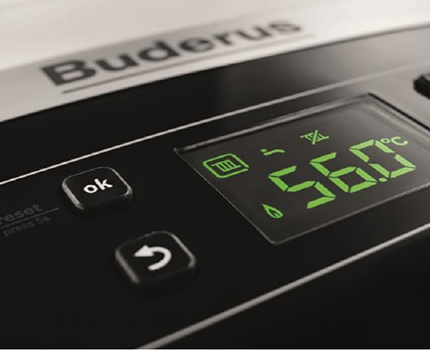
If the boiler has automatic power control, then it does not just turn on and off at the moment when it reaches the set temperature, it independently reduces the power to a minimum.
If the work in the minimum temperature mode is redundant, then only then the device goes into on-off mode.
Automatic power modeling increases energy savings, effectively affects equipment longevity and increases user comfort.
What else you need to pay attention to
In addition to power, the mass of technical characteristics of boilers affects the operation of a gas heating system.
More attention should be paid to the following parameters:
- Amount of gas consumed floor-mounted double-circuit gas boiler. You can choose an economical model by comparing products with the same power.
- Efficiency. One of the most important indicators affecting the economical use of energy resources. Leading manufacturers of gas equipment are working quite successfully on its increase - in modern devices it reaches about 100%.
- Hot water circuit performance. The indicator can be from 2.5 to 30 l / min.
- Power consumption in volatile equipment. On average, boilers can consume about 2 kW per day. About 60 kW per month
- Maximum temperature indicators. In the domestic hot water system they are about 55 ° C; in the heating circuit - up to 90 ° C.
- Water pressure. Values in the heating circuit reach 10 bar.
Only a thorough study and comparison of characteristics, feedback from users, sellers, representatives of installation and repair and maintenance services that work with gas boilers will help determine the manufacturer of high-quality equipment among the many brands on the market.
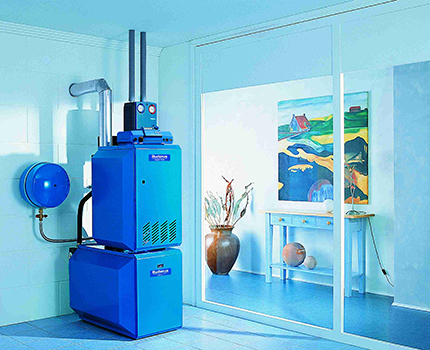
Additional selection recommendations, assessment of the technical and operational characteristics of different models, as well as an overview of the best gas boilers are given in the articles:
- Floor gas heating boilers: types, how to choose, an overview of the best brands
- How to choose the best gas boiler: criteria for choosing the best option
- Double-circuit gas boilers: types, principle of operation, selection criteria + overview of the best brands
Conclusions and useful video on the topic
The principle of operation of a double-circuit gas boiler:
How to choose a gas boiler:
Choosing a device for heating a private house is a responsible and serious task. It so happens that having entrusted to the sellers of gas equipment, you have to pay for the mistakes of others or “bail out” sellers of obsolete equipment.
As a result, you get not at all what or not quite what you expect to receive. Often, too late comes the understanding that to understand the many characteristics of double-circuit floor gas boilers, their design features and system operation parameters, you would first have to yourself.
Have experience operating a dual-circuit floor-standing gas boiler? Tell us which model you use for heating a house, what are the features of its work. Share your impressions of operating the equipment with our readers. You can ask questions and leave comments on the article in the form below.

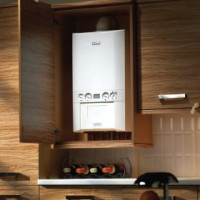 How to choose a gas wall-mounted double-circuit boiler: what to look at + what the market offers
How to choose a gas wall-mounted double-circuit boiler: what to look at + what the market offers 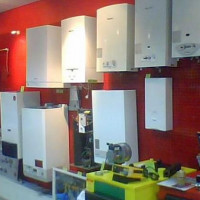 What is better double-circuit or single-circuit gas boiler: features of the device and operation
What is better double-circuit or single-circuit gas boiler: features of the device and operation  Wall or floor gas boiler - which is better? Arguments for choosing the best equipment
Wall or floor gas boiler - which is better? Arguments for choosing the best equipment 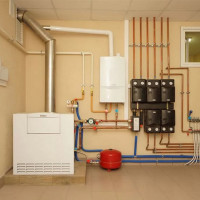 Atmospheric or turbocharged gas boiler - which is better to choose? Weighted Purchase Criteria
Atmospheric or turbocharged gas boiler - which is better to choose? Weighted Purchase Criteria 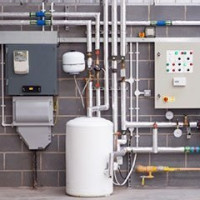 How to choose the best gas boiler: an overview of the criteria for choosing the best unit
How to choose the best gas boiler: an overview of the criteria for choosing the best unit  Gas boiler for liquefied gas: operating principle, types, how to choose the right + manufacturers rating
Gas boiler for liquefied gas: operating principle, types, how to choose the right + manufacturers rating  How much does it cost to connect gas to a private house: the price of organizing gas supply
How much does it cost to connect gas to a private house: the price of organizing gas supply  The best washing machines with dryer: model rating and customer tips
The best washing machines with dryer: model rating and customer tips  What is the color temperature of light and the nuances of choosing the temperature of the lamps to suit your needs
What is the color temperature of light and the nuances of choosing the temperature of the lamps to suit your needs  Replacement of a geyser in an apartment: replacement paperwork + basic norms and requirements
Replacement of a geyser in an apartment: replacement paperwork + basic norms and requirements